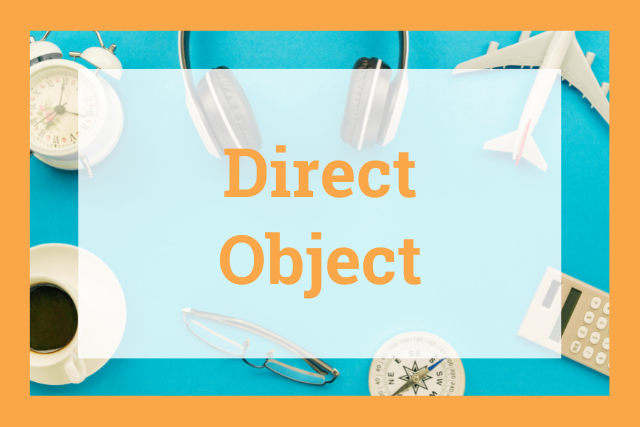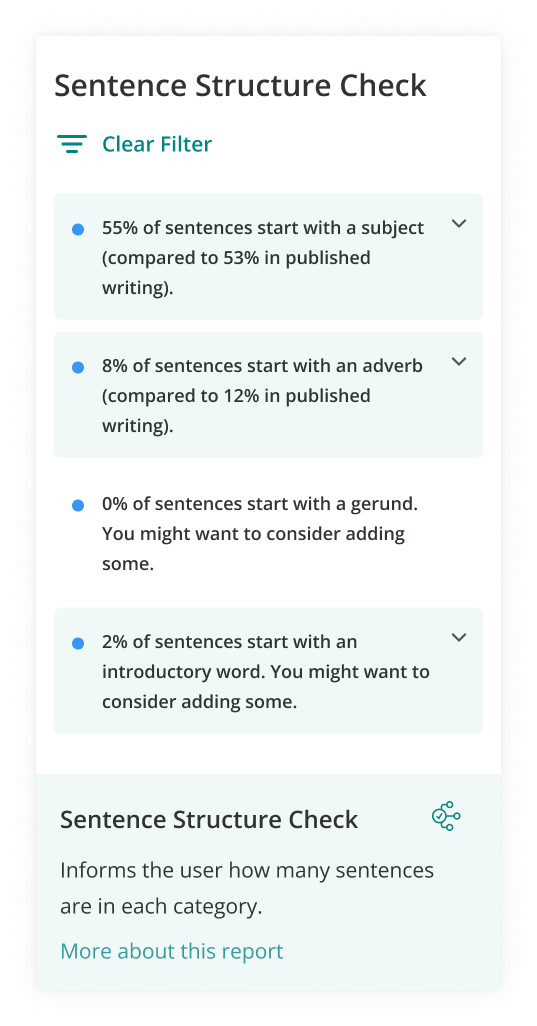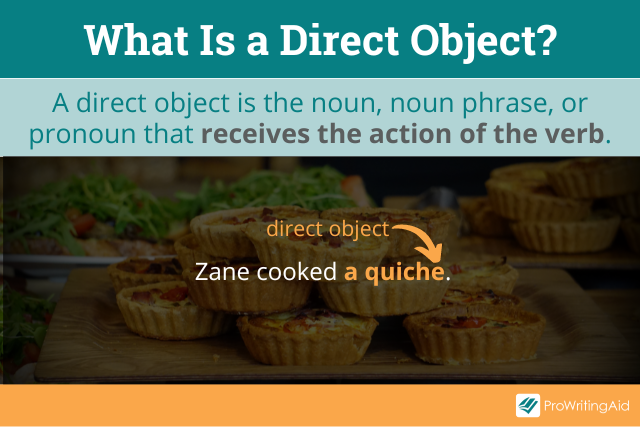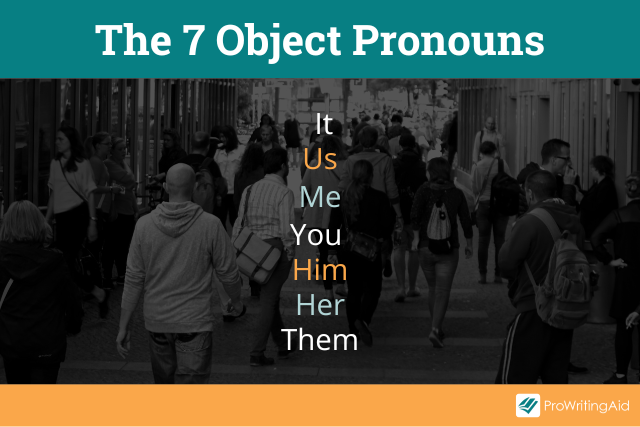
In English grammar, certain verbs require a noun to receive the action. A direct object in a sentence is the noun, noun phrase, or pronoun that is acted upon by a transitive verb.
In this article, we will take a closer look at how direct objects and object pronouns function in sentences.
Understanding direct objects is important for writing good sentences. You can always check your sentence structure with our free grammar checker.

What’s a Direct Object?
In English grammar, we can often categorize nouns into subjects or objects. While subjects are the nouns that do a verb, direct objects receive the verb in the sentence.
But what does it mean to receive a verb? It’s another way to say that the action is done to a noun or pronoun. Let’s look at a couple of direct object examples to clarify what receiving a verb means.
- They caught the thief.
- I cooked tacos.
To find the direct object, you can first find the verb, then ask “whom” or “what” took the action. In the first sentence, the verb is caught, so we ask, “caught whom?” The answer is the thief, which is the direct object.
In the second example, the verb is cooked. What did I cook? Tacos. Therefore, the direct object is tacos.
A noun phrase can also be a direct object. A noun phrase is a group of words that functions like a noun in a sentence. Here’s an example:
- I love designing clothes.
Designing clothes is what I love—it’s receiving the action. Therefore, designing clothes is the direct object.

Transitive vs Intransitive Verbs
Not every verb requires a direct object. For example, the verb run rarely needs an object. We could say, “She runs.” That’s a complete sentence, and there are no direct objects.
Verbs that require direct objects, like caught or thief, are called transitive verbs. Only transitive verbs require direct objects. When verbs don’t require direct objects, they are intransitive verbs.
Sometimes a verb can be both transitive and intransitive, depending on the particular meaning in that sentence.
“Run” becomes a transitive verb when it means “to operate or be in charge of” in a sentence, or if you’re talking about a specific route or competition that was run.
Transitive verb: He ran the cash register.
Transitive verb: She ran a marathon.
Intransitive verb: We run every day.
Cash register and marathon are direct objects.
Just because there’s a noun following the verb doesn’t mean it’s a direct object. If there’s a preposition present, it might be part of a prepositional phrase. This is common with many intransitive verbs. Here’s an example:
Intransitive verb with prepositional phrase: She runs to the store.
“To” lets us know that we aren’t dealing with a direct object. It’s not receiving the action “run.”
Not all verbs are intransitive or transitive verbs. There are also linking verbs. Linking verbs do not take direct objects. Some examples of linking verbs include to be, to look, to seem.
- He is a fighter.
In this sentence, a fighter looks like a direct object. But because “is” is a linking verb, a fighter is actually a subject complement. A subject complement is a noun, adjective, or pronoun that follows a linking verb.
Just because there’s a noun after a verb in a sentence doesn’t mean it’s a direct object. Remember, only transitive verbs take direct objects.
Direct vs Indirect Objects
It’s not always as simple to identify direct objects as it was in our first examples. Sometimes sentences also have indirect objects.
While a direct object receives a verb, an indirect object receives the direct object. Let’s look at an example:
- The boss gave the orders to the team.
In this example, the direct object is the orders. That is what the boss gave. The indirect object is the team. The team receives the orders.
As you can see, sometimes the indirect object comes after a preposition like “to.” But direct and indirect objects don’t always come in order. Sometimes the indirect objects precede the direct objects in a sentence.
- He cooked his wife dinner.
What did he cook? Dinner. That’s the direct object. But who was dinner for? His wife. That’s the indirect object.
Direct Object Examples
The best way to learn how to find the direct object in a sentence is by looking at examples. Here are more direct object examples:
- Have you read this book?
- The mom embarrasses her teenager in public.
- First, crack the egg into the bowl.
- The bully always mocked the quiet kids.
- I can’t quit my job because I need the money.
- Her husband ordered her a new oven with six burners.
- He enjoys playing the guitar.
Direct Object Pronouns
Pronouns are words that stand in for nouns or noun phrases. Object pronouns are pronouns that can act as either direct objects or indirect objects.
There are seven object pronouns in English: me, you, him, her, it, us, them.
These function just like other objects. When an object pronoun receives the action, it’s functioning as a direct object, but if it receives the direct object, then it’s acting as an indirect object.
Let’s look at an example of a direct object pronoun:
- The teacher taught them.
The recipient of the action “taught” is them.

Direct Object Pronoun Examples
Let’s look at some more examples of object pronouns functioning as direct objects:
- The sundae looks delicious. I want it.
- She told him to leave.
- The neighbors judged us for having an old car.
- Will you kiss me?
How to Identify the Direct Object in a Sentence
When you need to find the direct object in a sentence, first identify the verb. Then ask if there is a noun, noun phrase, or pronoun that the verb is acting upon. If so, you’ve found the direct object.
Be careful not to mix up direct and indirect objects and subject complements. Always ask “what” or “whom?” is receiving the action of the verb.


